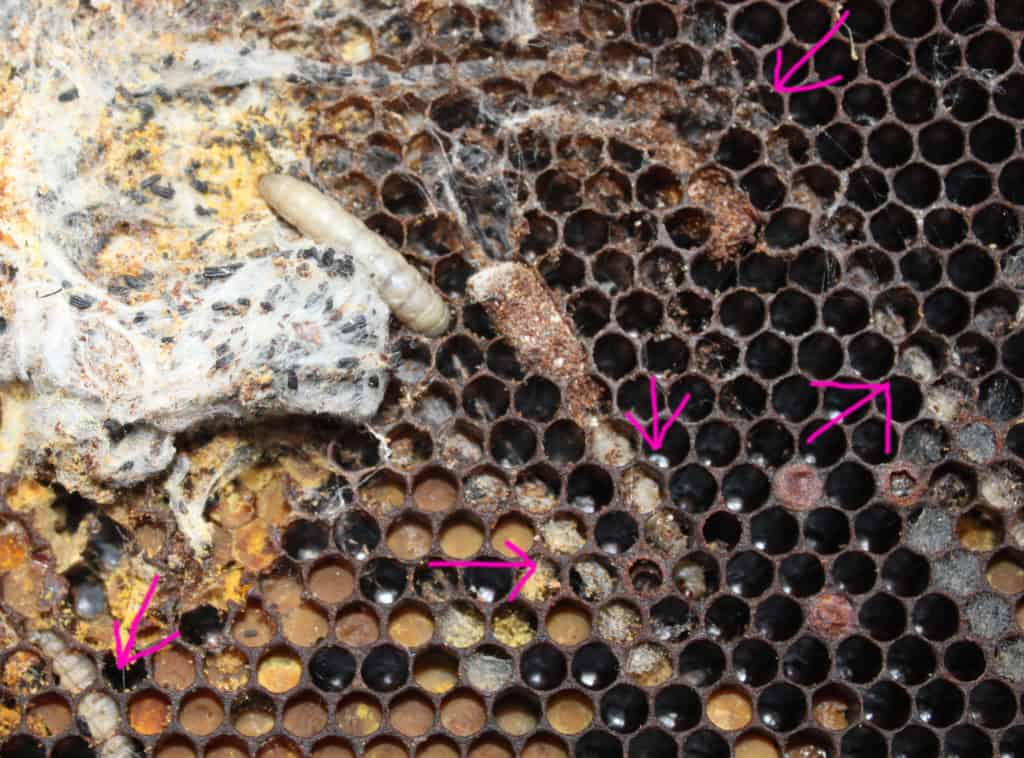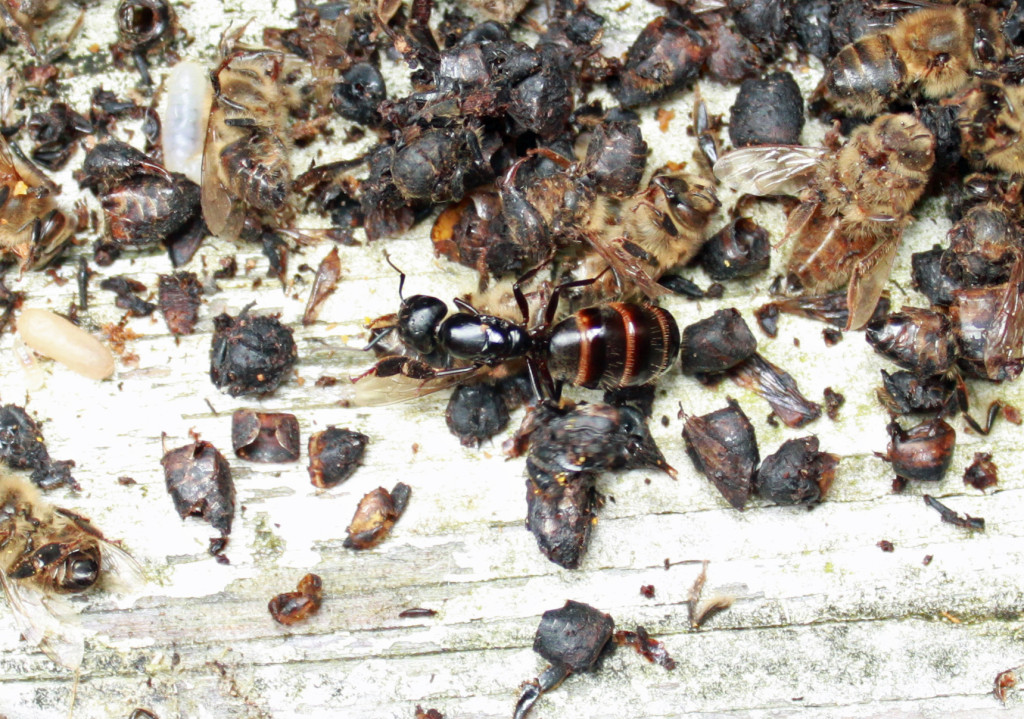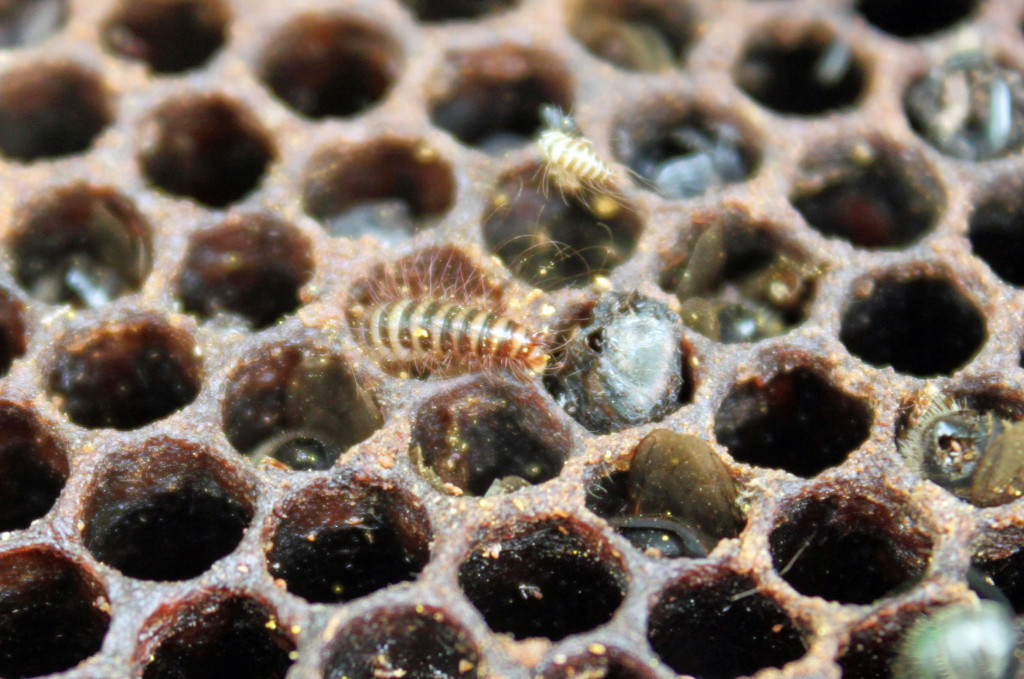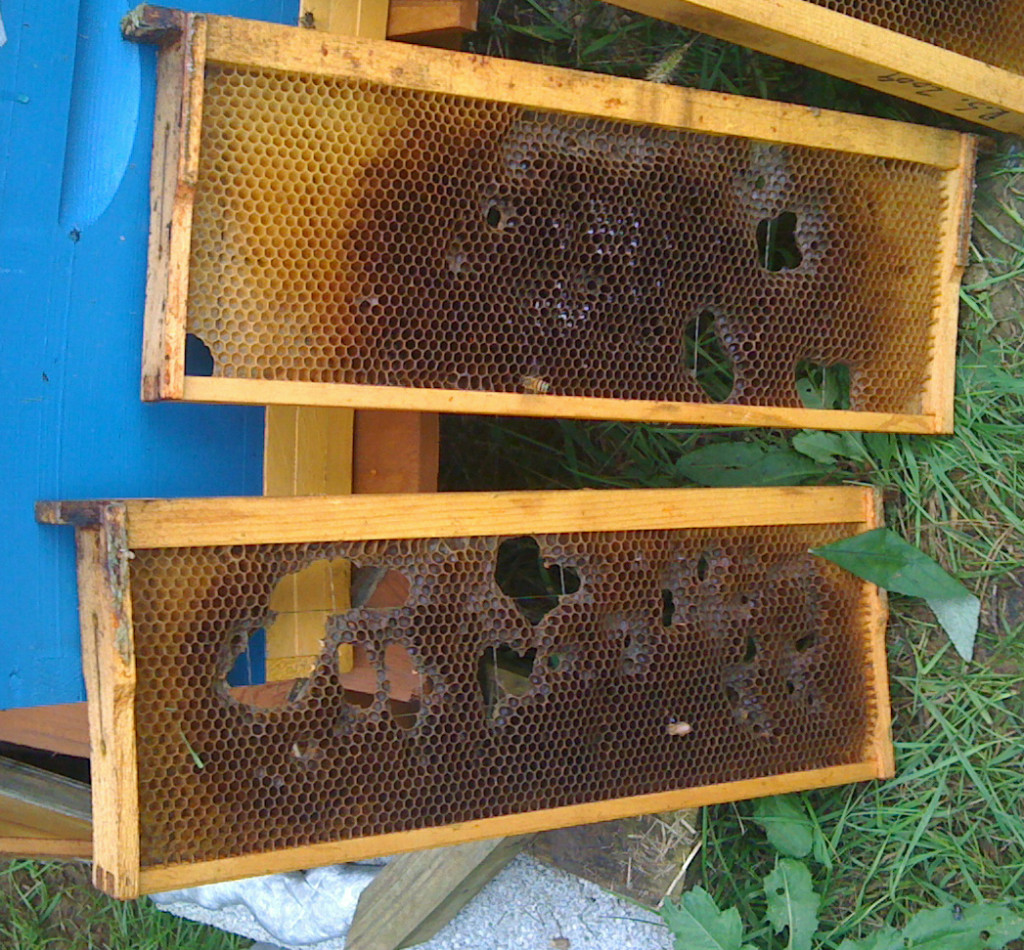

When a honey bee colony dies there a number of insects that will invade the hive and take advantage of the resources left over. Often, the first insect to move in is the wax moth and they can be a pest before the colony is even completely dead. These moths usually move into colonies at night when colonies are weak and take advantage of wax from the brood nest. I have pointed out these tunnels in the image below. Also found in dead out colonies are black ants. They use comb as egg storage and shelter from the elements. There is an image above of the carpenter ants storing eggs and larvae in cells. Another image above shows various life stages of the ants. There is an image below of the queen carpenter and on the bottom board of the hive.


Another insect found in dead out colonies are dermestid beetles. These beetles go by other common names such as carpet beetles, skin beetles and larder beetles. They feed on dried and decaying bees leftover in the colony. I have included an image of the larvae of a dermestid beetle below. Some species of the Dermestidae family are more famously known in forensics for cleaning flesh off bones or in dating remains.

These insects are more of a nuisance than anything to beekeepers. Wax moths cause an estimated 5 million dollars in damage in the industry per year. I personally have had many frames destroyed by these moths. Below is an image taken by my father of a frames with wax moth damage that the bees had cleaned up. Frames like this should be culled out.
